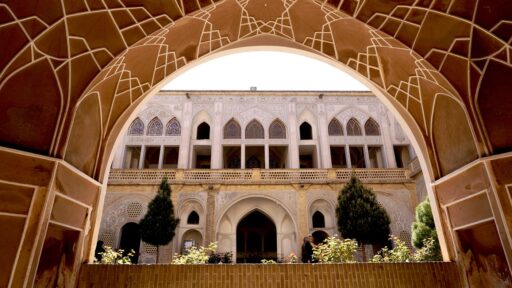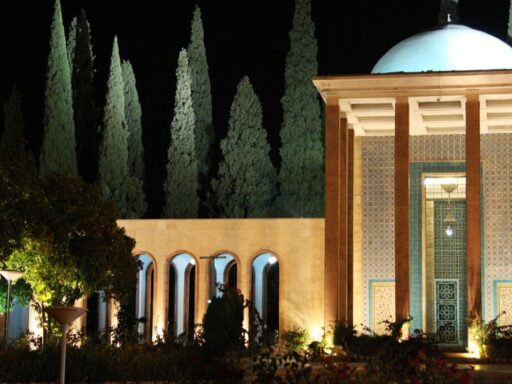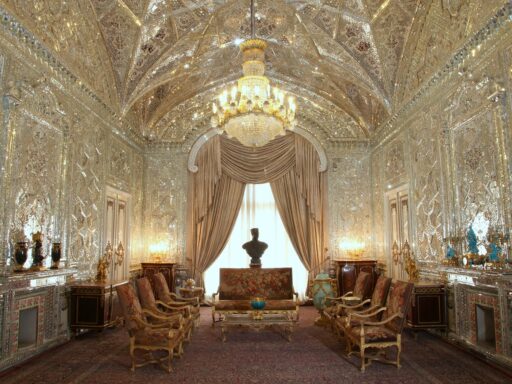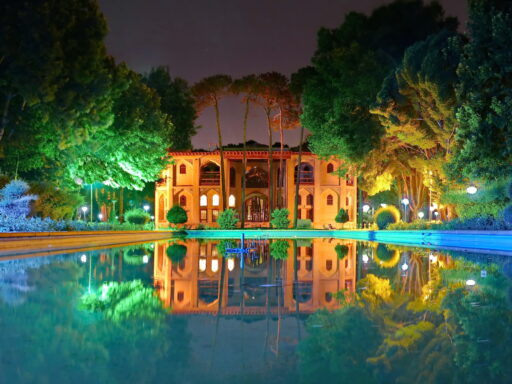Introduction The Abbasian Historical House
Abbasian Historical House – In a quiet alley in the central market district of Kashan stands an extraordinary relic from Persia’s architectural peak: the Abbasian House (Khaneh Abbasian). Built in the late 18th century for a wealthy merchant family, Abbasian House epitomizes the utmost refinement in Persian residential design just before modernization transformed interiors forever.
Impeccably preserved and appointed, the empty mansion museum offers visitors a uniquely immersive journey to explore a vanished lifestyle from the Qajar Era. Wandering through ornately decorated reception halls and lush private courtyards—even admiring illustrative wall paintings of lost beloveds—brings Iran’s cultural heritage alive through remarkably personal lenses into historic domestic atmospheres.
With structures like these vanishing in the region’s capitals, conserved jewels like Abbasian House help us reimagine daily existence across Iran’s bygone periods through profoundly intimate spaces spectacularly adorned and prized in their age.

History as a Family Estate
Original Wealthy Residents
The house was commissioned around 1790 CE by a Russian family who dominated Kashan’s lucrative textiles export industry. As merchant princes with extravagant oil revenues, the Abbasi clan sought building a showstopping family compound fusing the era’s popular European Rococo elements with resplendent traditional Persian residential design.
Master architects poured generations of central Iranian vernacular knowledge into maximizing climate comfort through elements like sheltered courtyards, underground windcatching ductwork, thick insulating walls, and an ingenious system of sluices regulating fountain water temperatures seasonally. These adaptive features made everyday habitation a delight rivaling ornate appearance even for overflowing multi-generational family residents and guests over 150 years until economic shifts eroded their financial dominance.
Preservation and Global Recognition
By the mid 1900’s facing possible demolition, the ruined property attracted action to conserve its unparalleled architectural quality and cultural heritage functions from activists like Irane Neshat. Successful restoration projects led by experts like Parviz Tanavoli and Khosrow Hassanzadeh adapted the estate into a dedicated museum drawing global acclaim by the 1970s.
Survey documentation revealed extraordinarily intact foundations surviving from over two millennia of continuous occupation on site. Besides underscoring the deep settlement roots in this oasis location on the Central Iranian Plateau, evidence confirmed AbbasIan House overlays an intact 700 year-old Ilkhanid Palace complex! This exceptionally rare continuity spotlights an incredible opportunity to study strata of integrated structural and material reuse over 20 human generations.
UNESCO’s select World Heritage listing in 2018 cements international awareness and preservation incentives protecting Abbasian House Museum as an unparalleled global heritage centerpiece attracting cultural pilgrims to Iran seeking glimpses into the splendor and sophistication of Persian arts during the Qajar era capitalizing on preceding achievements.
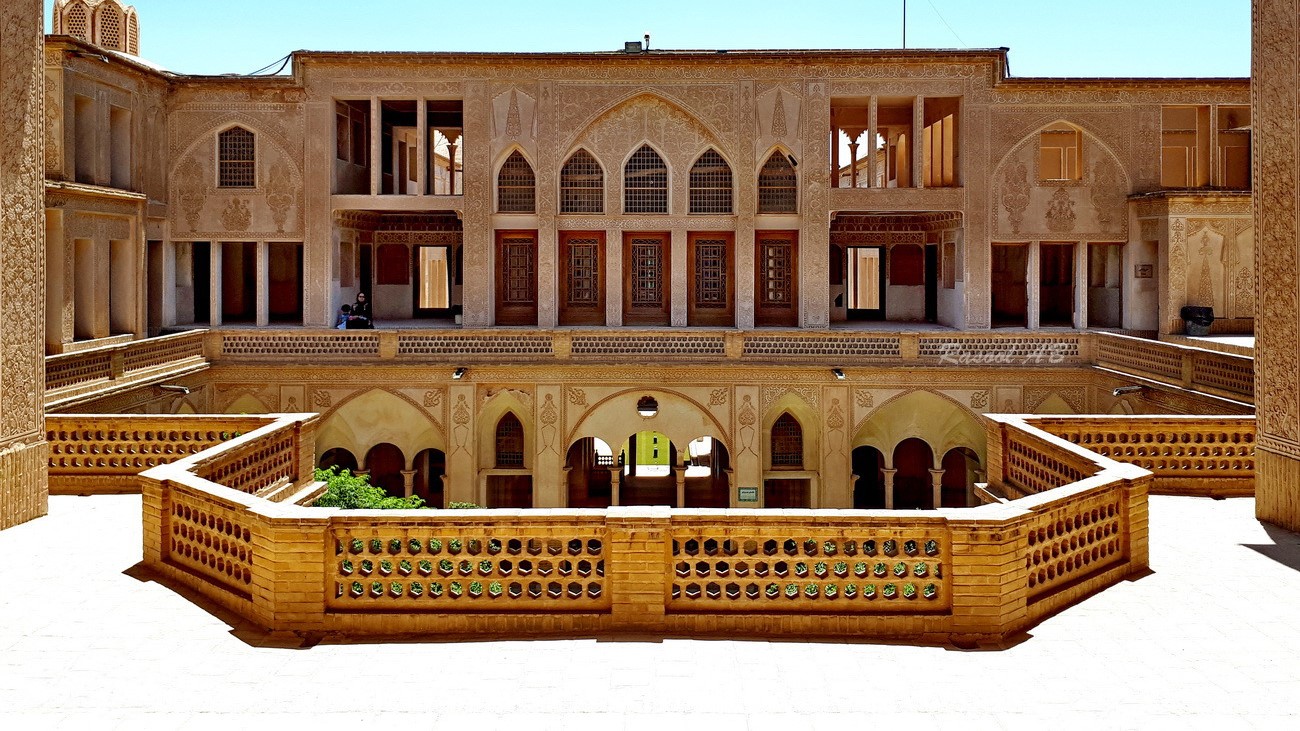
Architecture Overview by Section
Grand Entry Vestibule and Passageways
First arriving visitors stand awed before the symmetrical double-height entrance Iwan vestibule. Flanking guard quarters frame the towering gateway topped with a lantern skylight and sinuous mural crown molding. But this antechamber only hints at further grandeur dramatized upon plunging further into the house’ core flanked by grand staircases leading to gilded ceilings.
Throughout passageways and transitional halls, complex geometric brickwork mosaics layer the walls and floors alongside embedded alabaster seashell light holders known as Fanous. Stacked barrels taper tunnel ceilings in repeating muqarnas style mutli-tiered across door frames as cutouts filter natural illumination into central halls from the shaded margins.
Ceremonial Reception Rooms
The grandest ceremonial salons for hosting guests feature spectacular wall paintings framing scenes from poetic romances literally glistering under intricate mirror-glass tile mosaics refracting every atom of glinting light. Flanking the house’s center axis, the two large reception halls served complementary seasonal functions. The cooler autumn and winter Talar-e Bonjar was used more in those seasons for its hijab-friendly privacy while the more open-air spring and summer Talar-e Brel served for rest of the year.
Together these dazzling and more muted grand halls welcomed wealthy business partners, ambassadors, dignitaries and other elite miroring the owner’s aspired station over years of shifting politics in 19th century Persia. Their impressive scale and ornamentation sought elevating daily interactions through architecture.
Private Family Quarters
In contrast to elaborate guest entertaining spaces, more intimate zones enveloped family chambers and offices both luxurious yet smaller in scale reflecting inward focus on domestic life occupying most residents’ days. Cozier ornamentation around the ladies parlor and calm bedroom reflect subtle feminine touches likely added by the matron herself decorating her sphere even amid the overall patriarchy prevalent then. Touches like delicate flower still life paintings or dainty stone fountain basins softened corners gentler in touch and tones than major halls beyond communicating graceful moods putting inner social realms further at ease.
Throughout second story extensions paralleling the main ground level guest halls similarly housed flexible bedrooms, nurseries and studies accommodating cycles of generations being born, studying, working and ultimately dying across what was once undoubtedly a home bustling with constant motions as inheritances transferred down inside these storied walls over decades of family occupation.

Cultural Significance Interpreting Social History
Empire and Economics Manifest
Beyond architectural innovation and ornamentational opulence which struck foreign visitors from early travelogues onwards, deeper cultural insights percolate the longer one soaks in Abbasian House’s details. Manifestations of the Zoroastrian metaphysical worldview echo numerically across dimensions preserving ancient Iranian traditions passed orally long before waves of Islam and westernization impacted perspectives.
Trade networks tying Kashan by Abbasi’s times to Moscow and Barcelona materialize through material imports from tiles and glasswork to hardwoods manifesting in elaborate interiors. Shifting global wealth literally shimmers through delicate wallpapers and structural stucco applications mixing with local vernacular elements communicates surging commerce as times transformed radically even just the few decades this house actively functioned as a homestead.
Gendered Spheres Revealed
Perhaps the most compelling cultural time capsule quality comes from glimpses into gender separation norms permeating this bourgeoisie Muslim homestead. Contrasts between filigree delicacy of the ladies parlor and more blunt main salons cue shifts in permitted interactions governed by purity doctrines carried through into basic architectural divisions. The curtained wooden Mashrabiyyeh screens cloistering upper balconies allowed unseen female supervision of entry halls. Small stair boltholes let ladies slip discreetly between floors without crossing men or guests.
Myriad cues large and small signal the drastic social shifts modern Iranian families underwent in following generations. Appreciating traces of spatial coding the way residences like Abbasian both mirrored and shaped historic gender roles opens discussions still evolving today around public and private divides at home and in society. The silent walls preach volumes once we listen beyond the dazzle of striking first aesthetics.
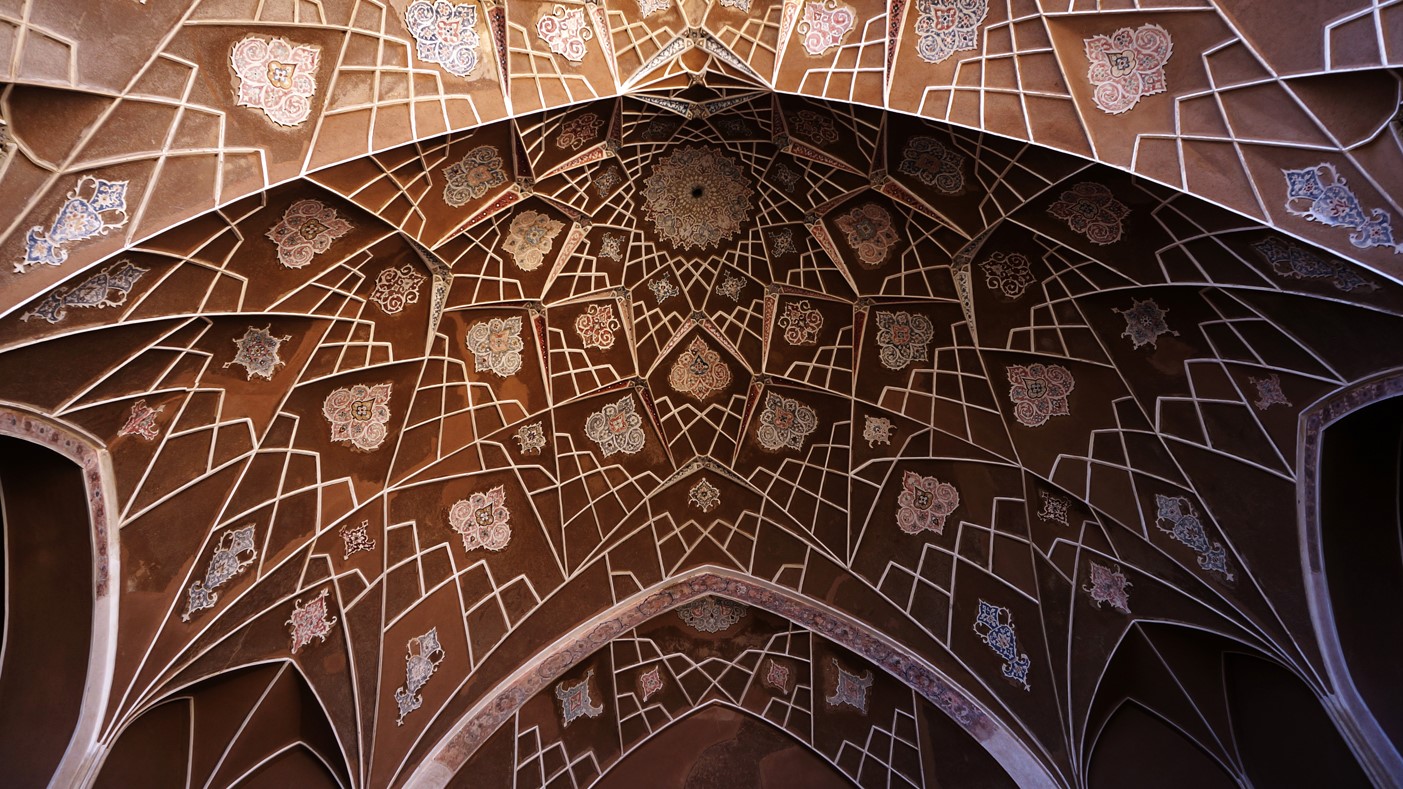
Visiting Timeless Treasures
As global renown mounts since UNESCO coronation and deeper studies unlock its treasures, visiting the Abbasian House Museum should make every travelers must-see list exploring Iran’s places. Managed since 2005 by the private non-profit Neshat Public Cultural Foundation started by pioneers who rescued the site decades ago from rubble, Abbasian now sees new generations arrive daily to connect with its crossroads stories where so much culture still feels so intimately within grasp just beyond the entry gate if we but reach out across the years.


